For many years, a lightweight material made of polystyrene - ceiling tiles - has been especially popular. Through the use of which, without much effort, it is possible to minimize or completely hide the defects and unevenness of the ceiling surface. There are many shades of ceiling tiles, monotonous or with a variety of patterns, and working with the material is simple, as it is glued easily and quickly. If you know how to properly glue the ceiling tiles, then even a beginner will not be difficult to cope with the operation of the material. This will be discussed in this article.
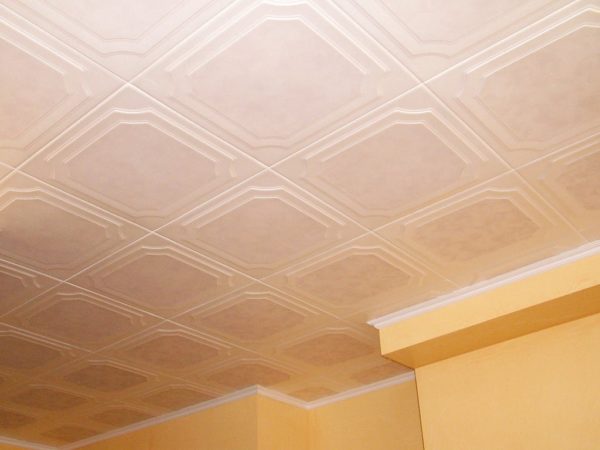
Types of ceiling tiles
There are 3 ways to make polystyrene tiles, respectively, the properties of the building material differ significantly. There are the following types of tiles:
- Pressed foam tiles. The name speaks for itself. Get such a tile by pressing blocks of polystyrene. The thickness of the finished product varies from 6 to 8 mm, hence the low weight, low density and thickness of the material.
- Extruded tiles. This material already has a high density, has a shiny and smooth surface, due to which it is able to imitate wood, marble and all kinds of other coatings. It is created by stamping from a polystyrene strip.
- Injection tiles. The leader of the list in terms of the massiveness of the material, the thickness is 9 - 14 mm., Due to which manufacturers can create the largest, structural patterns. After installation of such a tile, the seams are practically invisible. It is produced by sintering inside the press-form of raw materials, without destroying the granules.
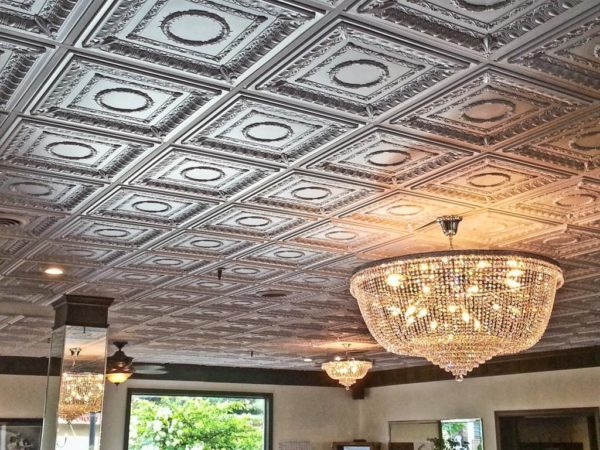
When choosing a tile, you need to pay attention to the quality of the edges. The edges should be smooth, without creases and cracks. It is strictly forbidden to cut and bend the edges of the tiles. Remember the only rule, the smoother the edges, the neater the seams look. A tile with a clear pattern and fine grain is considered to be of better quality. Particular attention should be paid to strength: the tile should not crack and break under the weight of its own weight, if you take one of the corners!
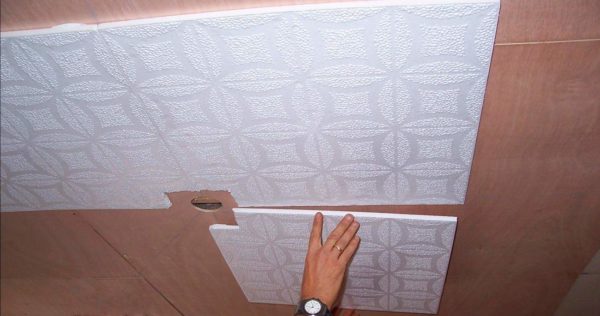
Several stages of installing tiles on the ceiling
Laying polystyrene panels is easy if you follow the instructions exactly. For each coating, the adhesive is selected individually.In the construction segment, a variety of compounds or liquid nails are presented, all of which firmly fix the plates on the ceiling. However, you will have to hold the tile for a certain time in order for the glue to grab, which causes a lot of inconvenience. It is more practical to use mastic for ceiling tiles in work.
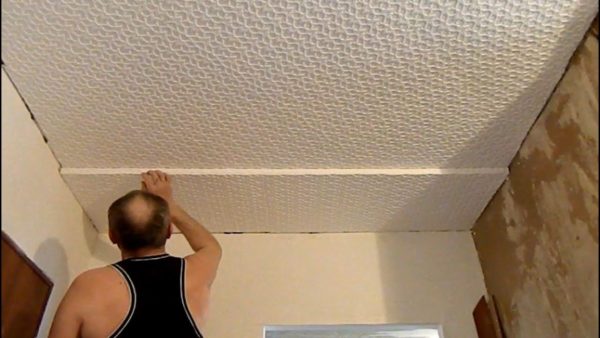
It is a mushy paste packaged in small buckets. The main difference between mastic and glue is the consistency, it is more sticky. Therefore, the tile sticks to the wall almost instantly, and there is no need to hold the plate until it sticks. Some use putty as a fixing solution. As a rule, this method is appropriate if it is necessary to radically level the surface of the ceiling and at the same time stick decorative elements on it.
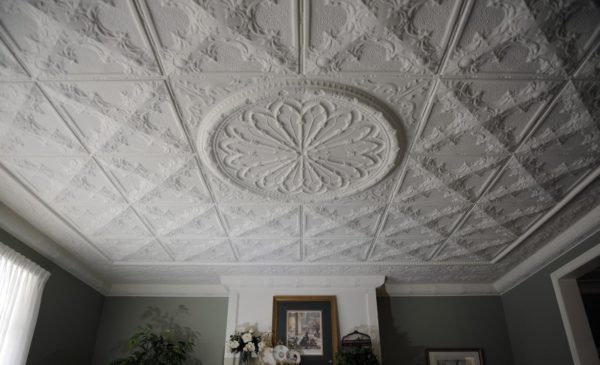
Preparatory work
The first step is to inspect and prepare the foundation. Any unreliable and flimsy elements from the ceiling must be removed. Fragments of old putty, whitewash, wallpaper must be removed with a spatula. If the surface to be treated has recently been whitewashed, then wash off the whitewash with water, provided there is a small layer of paint. The prepared, cleaned base must be level and dry before starting work.
Did the article help you?
